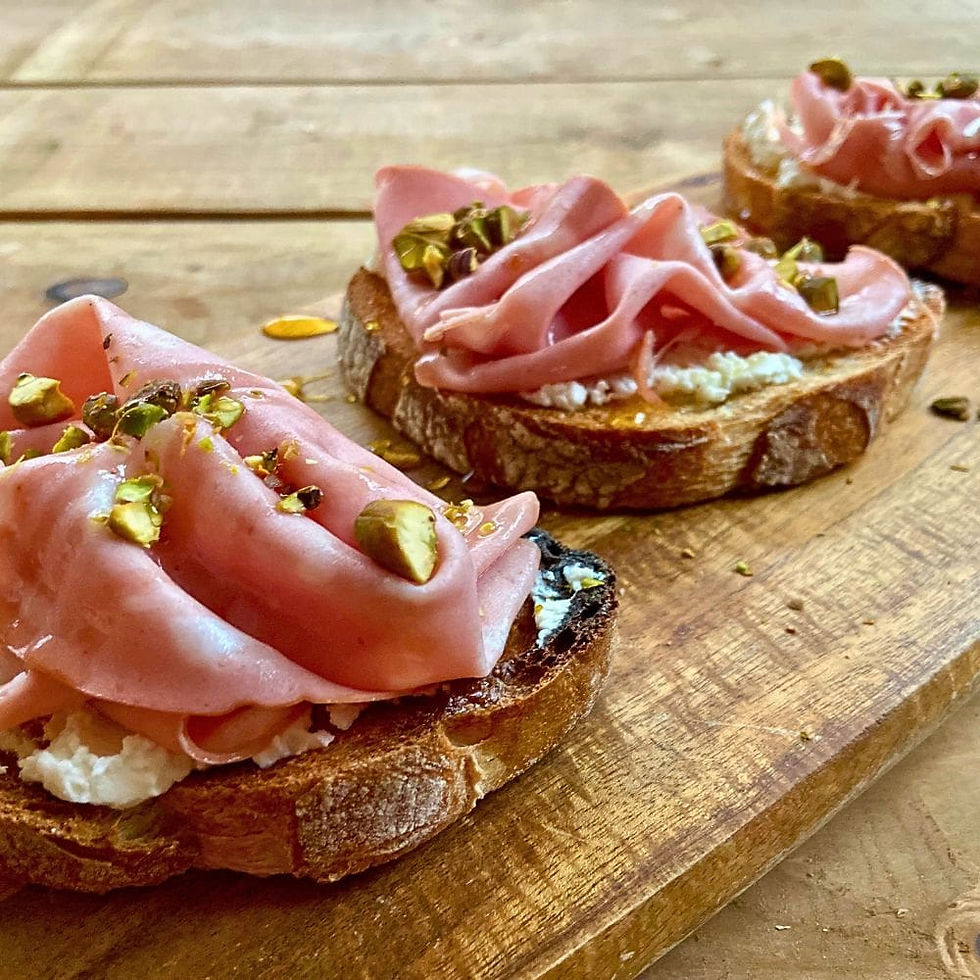What's the Difference between Baking Soda and Baking Powder, and When Do You Use Each?
- The Chef & The Dish
- Sep 22, 2023
- 3 min read
It never fails when we're whipping up dessert for friends stopping over for dinner, we pause to remind ourselves... What do I need again? Baking Soda or Baking Powder? See, some of the team here at The Chef & The Dish HQ are self-admitted horrible bakers. Consider it a lack of patience or bad math skills, but baking is a science and it's important to understand the chemical reactions that happen during the process.

What is Baking Soda?
Baking soda is pure sodium bicarbonate, also sometimes referred to as bicarbonate of soda. It is considered a "base" and when combined with an acidic ingredient, it will produce bubbles that (voila!) give a light and airy texture to your baked goods. The reaction happens very quickly, so any recipe that uses baking soda should go into the oven quickly to get the most airy texture.
What is Baking Powder?
Baking powder is a blend of baking soda along with other ingredients. The other ingredients include the acidic elements that are otherwise missing in pure baking soda. One of those other ingredients is tartaric acid, what lay people refer to as cream of tartar. Cream of tartar is the acid that activates the baking soda in baking powder. So, in short - baking powder has the same purpose of baking soda, but achieves it in a different way.
When do you use Baking Soda?
Use baking soda in recipes where the ingredient list contains acidic ingredients. Acidic ingredients include buttermilk, yogurt, sour cream, vinegar, molasses, apple sauce, citrus juice, honey (yes, surprising) or brown sugar (yes, also surprising). To begin feeling comfortable with baking soda, take note of the other ingredients in a recipe. If it calls for baking soda there will be an ingredient that is considered acidic. Baking soda is powerful and you don't want to use too much. You'll notice you always use less baking soda that baking powder in a recipe because baking soda is nearly four times more powerful than baking powder.
When do you use Baking Powder?
Baking powder is suitable for recipes that lack acidic ingredients or for those that require longer mixing or resting periods, such as cakes, biscuits, and some cookies.
Substitution Tip: In a pinch, and we mean a real pinch - you can substitute baking powder for baking soda by using three times the amount of baking powder as the amount of baking soda called for in the recipe. However, this substitution may affect the taste and texture of your baked goods and it's not suggested. Your final dish may be a bit more dense, metallic tasting or even a bit dull. This is one ingredient you should understand the science behind before you start subbing one for the other.

Just as you feel comfortable, you see a recipe that includes both baking powder and baking soda. Why?
You might be surprised to see many recipes call for both baking soda and baking powder. Yes, mind blown. There are three main reasons for this:
First, the amount of the acidic ingredient in the recipe may not be enough or strong enough to have that chemical reaction with the baking soda. The baking powder gives it a lift, consider it the "jumper cable" in the recipe.
The second reason is, you may want to achieve a tangy flavor. Part of the role of a base ingredient is to neutralize the acid. However, when you neutralize the acid, you in effect, take away some of that acidity you may be looking to keep in the final product. Adding both baking soda and baking powder help retain some of that acidity while providing the reaction needed to help your baked good puff up.
And third, baking soda helps facilitate the Maillard Reaction. This is, in simplicity, a chemical reaction that results in browning and that distinctive rich flavor when something is browned.
The best way to learn is always to get into the kitchen and start experimenting. Call in a professional. Book a cooking class with a chef who will video call into your kitchen.
ABOUT THE CHEF & THE DISH
The Chef & The Dish has chefs around the world that you video conference into your kitchen for a private 1:1 virtual cooking class. Learn how to make pasta with a chef video calling you live from Italy, Pad Thai with a chef virtually in your kitchen live from Thailand. Together you cook, share stories, laugh and make a multi course meal together. Rated 'Best Date Night,' 'Best Gifts,' and "Best Cooking Classes" by WSJ, Forbes, Vanity Fair, Martha Stewart, Rolling Stone and tens more. Transport your kitchen for the day.™






Comments